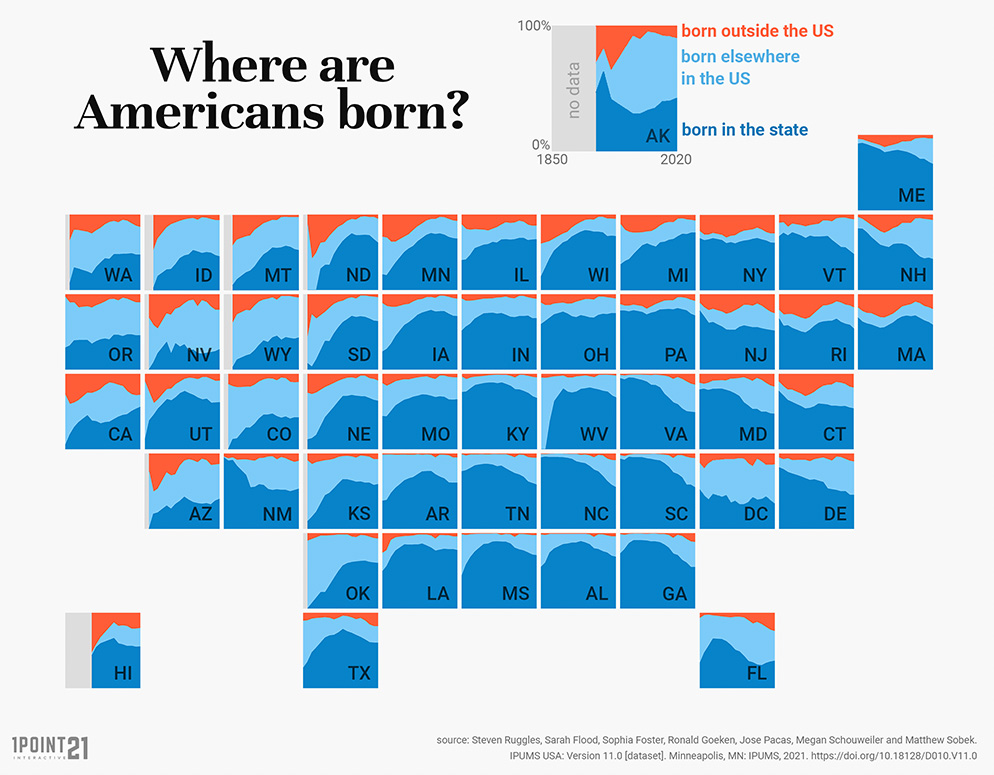Where Are Americans Born?
Note: This content originally appeared on https://www.welcomelawfirm.com/blog/where-americans-are-born/.
With the recent shift to remote work and the precipitous increases in the cost of living in many areas of the United States, it seems like more Americans are on the move than ever before. In fact, according to the U.S. Census Bureau, an estimated 7,398,337 Americans moved to a different state in 2019 alone.
However, are these movement patterns unusual? Working with 1Point21 Interactive, we examined 170 years of U.S. Census data to visualize the history of where Americans are born.
In 2020, 58 percent of Americans lived in the state that they were born in, down from 66 percent in 1850 and the peak of 70 percent in 1940. Only 28 percent were born in a different state and only 14 percent of residents were born in another country.
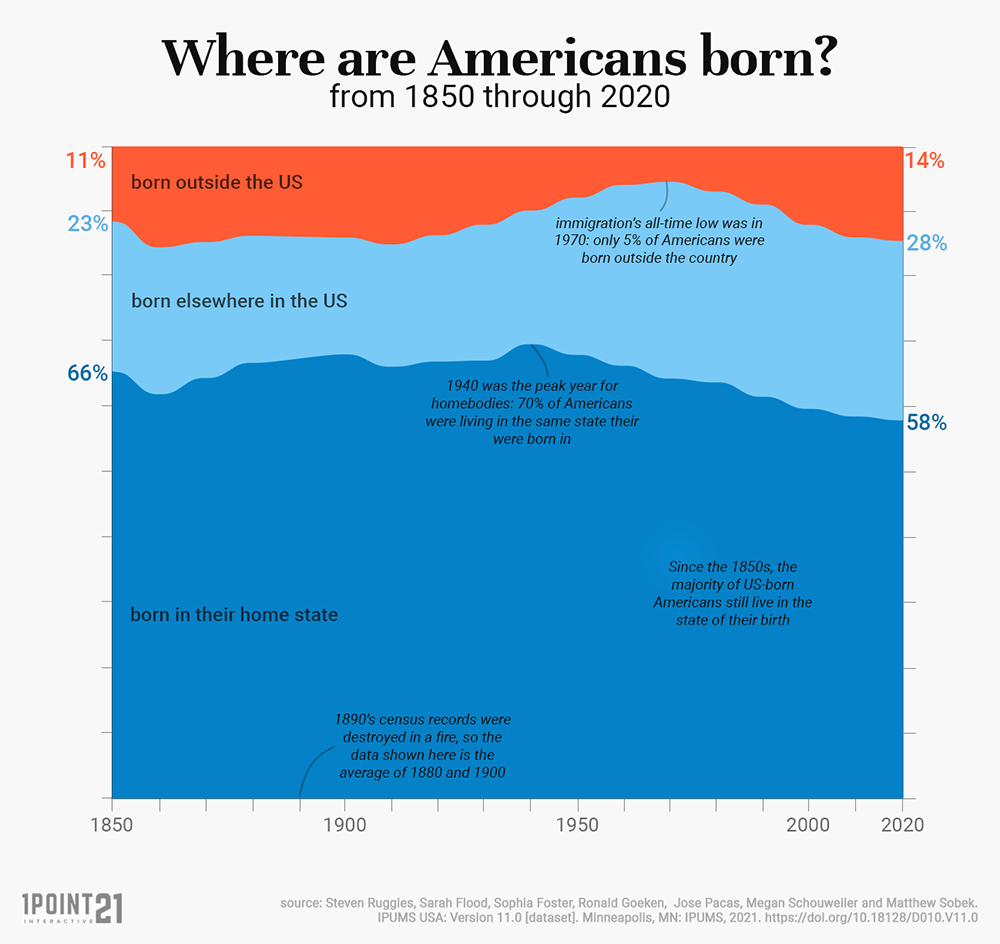
The Birthplace of Residents of Each State: 1850 – 2020
This chart shows the place of birth of state residents from 1850 – 2020. The dark blue represents those who were born in the state they reside in, light blue shows those born elsewhere in the United States, and red shows those born in a country outside the U.S.

As you can see, several states, such as Alaska, Hawaii and Nevada, did not achieve statehood until partway through this time period. As a result there is no data available from 1850 through the year that they officially became a state.
Click here to view a table with data for all states.
Birthplace patterns vary greatly from state to state for a whole host of reasons. Below are a few examples and explanations for why the chart looks the way it does.
West Virginia
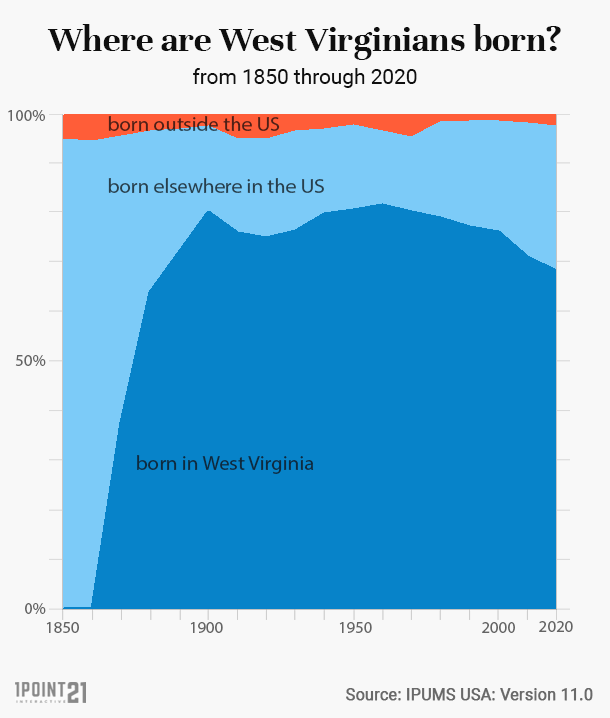
- West Virginia became a state in 1863 after deciding to break away from Virginia at the start of the Civil War
- Prior to 1863, everyone born in the area we now West Virginia was actually born in Virginia.
- We can see this in the chart: before the 1870 census, nobody was born in the state because it didn’t yet exist!
Nevada
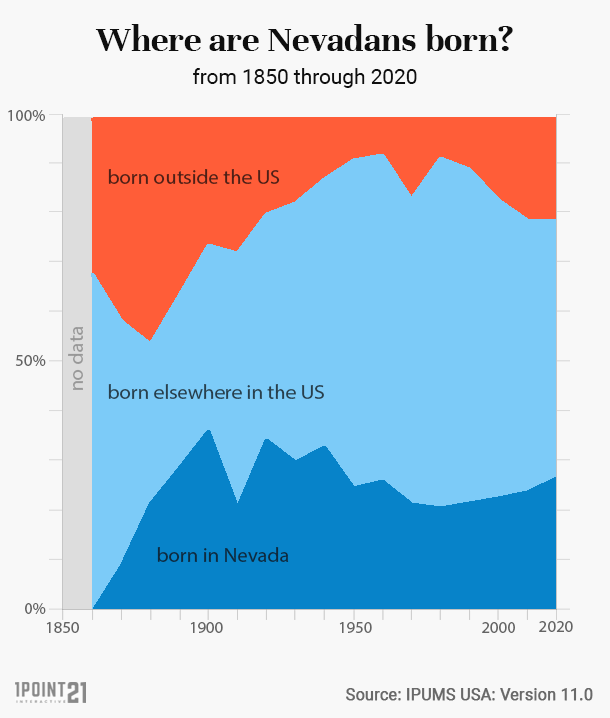
- Nevada has the interesting distinction of having the fewest native-born residents as of 2020
- Only 27% of Nevadans were born in the state. (Coming a distant second is Washington, DC at 33%)
- Foreign-born Nevadans commonly hail from Mexico, the Philippines, and Central America, often coming to work in the gambling industry
- American-born Nevadans are most commonly from other Southwestern states like California, Texas, and Utah
Florida
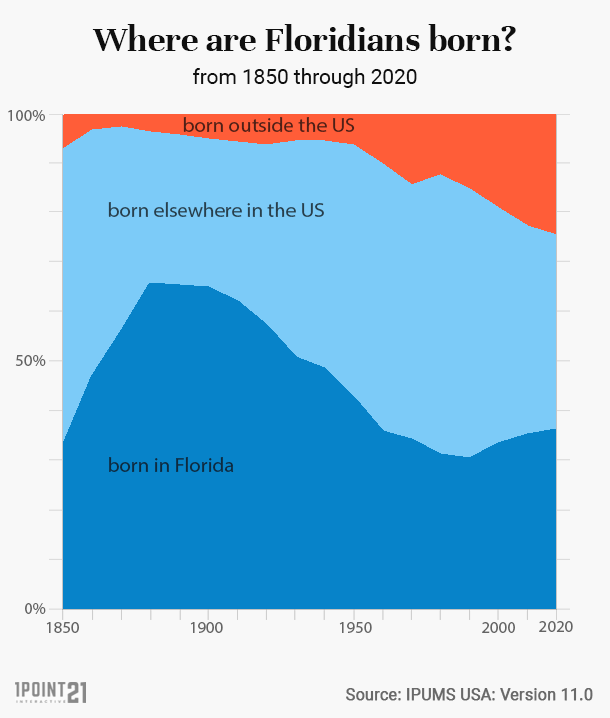
- Since the 1960s, Florida has seen one of the largest increases in immigrants from outside the US of any state
- Most of these newcomers are from the Caribbean–particularly Cuba and Puerto Rico.
- Predictably, US-born people living in Florida who weren’t born there tend to be snowbirds. In 2020, folks from New York, Pennsylvania, and Ohio topped the list.
Texas
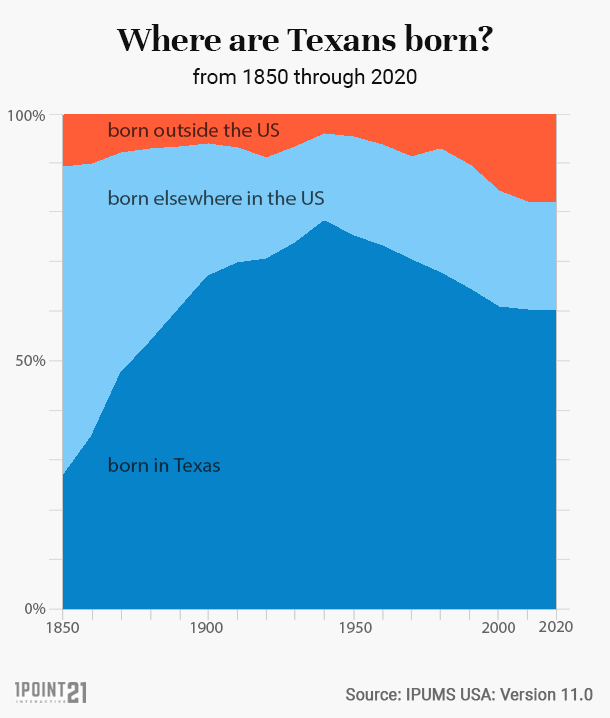
- Texans have a reputation for state pride… and for complaining about new people moving into their state (especially those from California)
- To be fair, since WWII, the percentage of Texans who were born in Texas has been declining
- However, the drop-off has largely stabilized in the last 20 years, and about 60% of Texans are born and bred
Born Outside the United States
For simplicity, we lumped all foreign-born Americans together in the visuals above. However, the makeup of America’s foreign-born population has changed significantly over time, from Europeans flooding in during the 1800s, to today’s more diverse mix. This chart shows that change over time and where Americans are from.
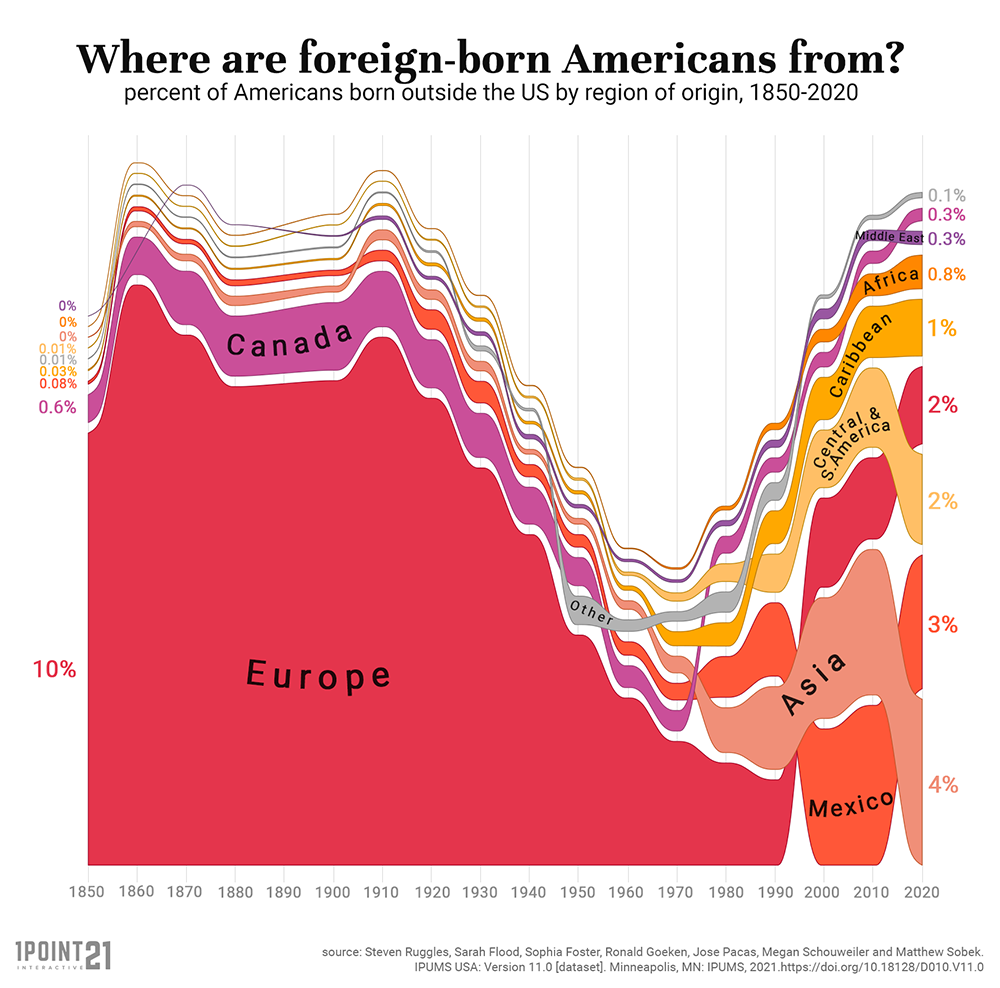
Data and Methodology
This data comes from a combination of US Censuses (1850-1990) and American Community Surveys (2000-2020).
Prior to 1900, the Census did not reliably include Native Americans. In 1860, it began including Native Americans living in the general population, and in 1900, it included those living on reservations as well.
Pre-Civil War data for enslaved people is also unreliable. While they were included in censuses, their names, ages, places of birth, and other important information was not. Treat the early data for slave-holding states with caution, as it is very likely inaccurate.
If you would like to report on or republish this analysis, please cite our work by linking to this page.
- Categories:
- Maps
- North America

